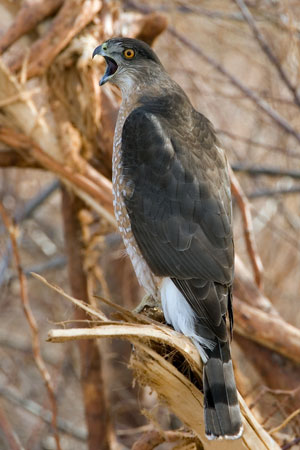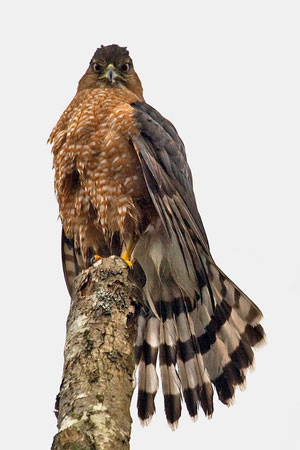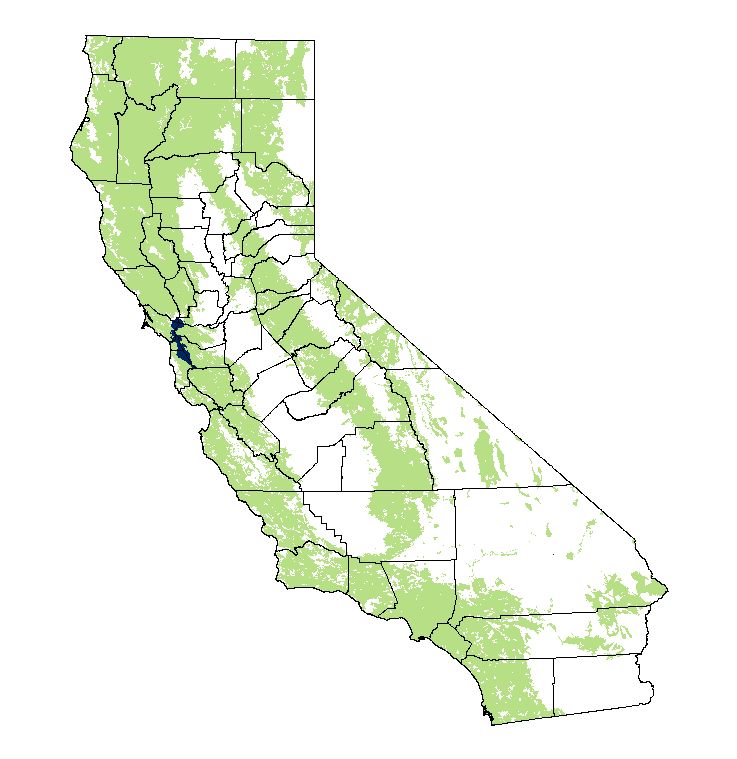
Home | About Us | Projects | Maps | Facts
NatureMapping Animal Facts
Cooper's Hawk
|
Cooper's Hawk (Accipiter cooperii)

The forward facing eyes of the Cooper's Hawk are yellow to deep red. They have good depth perception for hunting and catching prey while flying at high speeds. This raptor has powerful feet with needle sharp talons for catching prey. The hooked bill is well adapted to tearing the flesh of its favorite prey such as chipmunks, squirrels and birds. The Cooper's Hawk is from 14 to 21 inches long, with a wingspan of from 27 to 36 inches. The tail is long, rounded, and barred (see photo). Females are up to one third larger than males, one of the largest sexual dimorphism size differences of any hawk.
Calls:
The alarm call is a series of sharp "cak"s.
Range / Habitat: The Cooper's Hawk breeds across southern Canada southward to southern United States and into central Mexico. Breeds in deciduous, mixed, and coniferous forests. Winters throughout the United States and Mexico. Click the range map to learn more about the distribution of Cooper's Hawk in California. Diet: The Cooper's Hawk is a small raptor that captures its favorite prey including chipmunks, squirrels and other small mammals. It also feeds on various bird species including starlings, flickers, robins and Mourning Doves. 
Behavior: During hunting, the Cooper's Hawk approaches its prey stealthily, moving quietly through dense cover until it is close enough to overcome its target with a burst of speed. The secretive traits that allow the Cooper's Hawk to surprise its prey also make it difficult to observe by humans. Most of Washington's Cooper's Hawks probably migrate to central and southern Mexico for the winter.
The female lays and incubates from 4 to 6 bluish white eggs, that hatch in about 5 weeks. During the incubation process, the male brings food to the female. After the eggs hatch, both parents tend the young who leave the nest after four to five weeks. Parents continue to provide food until the young become independent at about 8 weeks.
Did you know?

Cooper's Hawk More information: BirdWeb: Cooper's Hawk
All About Birds: Cooper's Hawk
|
